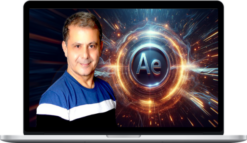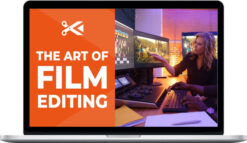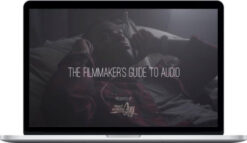Hollywood Camera Work – The Master Course
$397.00 $9.00
Hollywood Camera Work – The Master Course
THE MASTER COURSE
READY TO LEARN A LOT?
Years in the making, The Master Course In High-End Blocking & Staging is the most comprehensive and ambitious camera blocking course in the world.
A groundbreaking learning tool used by everyone from beginners to Academy Award winners, the course teaches high-end camera work through over 9 hours of 3D animated instruction on 6 DVDs.Besides working with actors, blocking is one of the most important things a Director does, and should be really good at. Yet most books, videos and many film schools barely touch the basics.
The Master Course
A Total Language
The Master Course is a powerful system of single-camera blocking and an unprecedented language of camera work, that may fundamentally change the way you direct.
The course was created by director Per Holmes, who spent over half a decade developing an all-inclusive language of high-end feature camera work for personal use, and then realized how much others would benefit from these techniques.
The Master Course is far beyond any current filmmaking program, and is intended for professionals who want to take their blocking skills to the highest level, and those who are crossing over from another discipline, but can be used by filmmakers at any level who are committed to mastering high-end directing.
What You’ll Learn In The Master Course
The primary goal of The Master Course in High-End Blocking and Staging is to do the most effective blocking with the highest production-value, and to build a vast repertoire of techniques to make Directing more expressive — and ultimately more fun.
The course also deals with the problem that blocking often grabs so much of our attention that we’re forced to choose between doing camera work or nurturing great performances. If we choose acting, the camera work suffers. If we choose camera work, the actors are often left to direct themselves. One of the key goals of the course is to have great camera work become so automatic that we can do both at the same time.
When shooting, we also too often abandon many great shots we had planned. When we’re under pressure, we revert to tried and tested techniques like two reverses and a master. Even if we know plenty of techniques, we often only use the ones we know extremely well, so another key goal of the course is to know techniques so well that we actually use them.
The higher purpose of the course is to do as meaningful and expressive camera work as possible. While the course spends a lot of time getting good at technical things like complex line-issues, the deeper goal is to have a profound understanding of the how and why of everything. Ultimately, the goal is to have as clear and precise an emotional impact as possible. All the hot moves we can create (and we do create a lot) are really means to that end.
Blocking With Models
Models are not just the most patient actors, there’s a very particular reason The Master Course uses them: They are completely expressionless. As we work with dynamics between the characters and blocking camera moves, all emotions must be coming from the camera work.
Working with models is incredibly educational, because the effect of every technique becomes so clear. As soon as we separate the acting performance from the camera work, we get a much deeper understanding of how the camera work infers thoughts and feelings.
The Master Course is also for…
Cinematographers
Blocking is just as important for a Cinematographer as it is for a Director, sometimes even more so. On an ideal production, it’s not either the Director or the Cinematographer who makes blocking choices, but an intimate collaboration. When both have great blocking skills, the process becomes much more non-verbal, intuitive, and creative.
Directing is a full-time job, and some Directors want to dedicate their attention to developing and nurturing the actors’ performances, which is a worthy goal, and is almost always better for the actors.
When that’s the case, he or she depends on the Cinematographer to develop the entire camera-plot, and pick the angles and moves that best bring out the emotions in the scene.
Script Supervisors
As essentially the Director’s right hand with regard to blocking, it’s important for a Script Supervisor to have a deep understanding of camera work.
A Script Supervisor often has a higher vantage point, and is in a unique position to spot errors when shooting. There’s nothing more reassuring to a Director than to know that a person with equal blocking skills is keeping an eye on the bigger picture. With great blocking skills, a Script Supervisor becomes a trusted – and much needed – ally in working out scenes.
Editors
While Editing often happens long after the fact, Blocking and Editing are so interwoven that one really can’t function without the other, and the course deals quite a bit with it. It’s in Editing that it becomes clear which shots are needed, and an Editor with deep knowledge of blocking is uniquely disposed for making shot suggestions.
3D/VFX/Game Animators
The filmmaking skills required for producing high-end cinematic or 3D sequences are no different from the skills required by an experienced Director. While it’s possible to create any conceivable camera move in 3D, great sequences come from good old-fashioned Directing, which is really independent of whether the medium is live-action or animated.
(Quick Tip: The fastest way to give 3D camera work a movie-feel is to rig a virtual dolly/crane in 3D and operate within the same constraints as “physical” filmmaking.
When that’s the case, he or she depends on the Cinematographer to develop the entire camera-plot, and pick the angles and moves that best bring out the emotions in the scene.
Videographers
Whether on a small or a large budget, the key to excellent Videography is production-value. But production-value has very little to do with what something has actually cost to shoot, and everything to do with how shots are designed. It is what makes the difference between a million-dollar production that looks cheap, and a low-cost production that looks ten times its budget.
While the course is mainly geared towards narrative shooting, the first four volumes are all about building a comprehensive language of camera moves that apply equally well to any type of shooting. The underlying focus throughout the course is on creating the most elegant and classy shots. Especially Volume III and IV deal exclusively with many hundreds of dolly and crane techniques that will dramatically increase the production-value of your next shoot.
Actors
It’s not uncommon for Actors to feel creatively restricted by meticulous camera work and having to hit marks to the millimeter. But the truth is that good camera work can bring a depth to the character that is simply impossible to achieve by the performance alone. A deep understanding of camera work allows an Actor to really know what is being communicated, and take control of his or her performance in a whole new way.
Writers
A script is a blueprint for a movie, and a Writer with blocking skills is able to create writing that translates seamlessly into camera work without necessarily cluttering the script with stage directions. Writing that’s done with blocking in mind is very easy to Direct – or hard to Direct wrong – and ensures that more of your vision ends up on screen.
More courses from the same author: Hollywood Camera Work
Be the first to review “Hollywood Camera Work – The Master Course” Cancel reply
You must be logged in to post a review.
When will I receive my course?
You will receive a link to download your course immediately or within 1 to 21 days. It depends on the product you buy, so please read the short description of the product carefully before making a purchase.
How is my course delivered?
We share courses through Google Drive, so once your order is complete, you'll receive an invitation to view the course in your email.
To avoid any delay in delivery, please provide an Gmail and enter your email address correctly in the Checkout Page.
In case you submit a wrong email address, please contact us to resend the course to the correct email.
How do I check status of my order?
Please log in to Courseforjob account then go to Order Page. You will find all your orders includes number, date, status and total price.
If the status is Processing: Your course is being uploaded. Please be patient and wait for us to complete your order. If your order has multiple courses and one of them has not been updated with the download link, the status of the order is also Processing.
If the status is Completed: Your course is ready for immediate download. Click "VIEW" to view details and download the course.
Where can I find my course?
Once your order is complete, a link to download the course will automatically be sent to your email.
You can also get the download link by logging into your Courseforjob account then going to Downloads Page.
Related products
Design & Creative
Design & Creative
Film Editing Pro – Premiere Pro Quickstart + Power User Pack
Design & Creative
Design & Creative
Design & Creative
Design & Creative
Design & Creative












Reviews
There are no reviews yet.